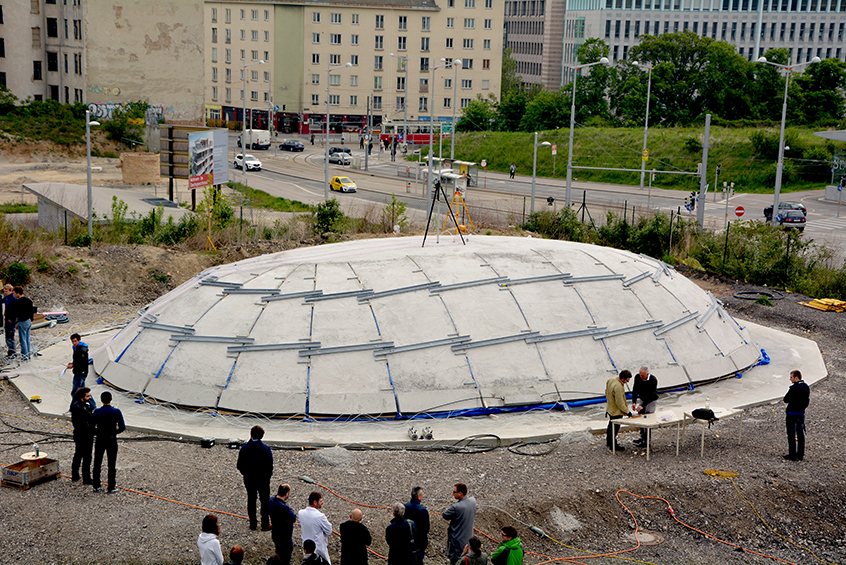Researchers at Vienna University of Technology have produced their first building by a new method of inflating concrete domes.
The experimental building has a height of 2.9m.
Another structure will be built for Austrian Federal Railways this summer. This will be a bridge to allow deer to cross a railway line (pictured above). It will have a length of 27m, a width of 19m and a height of 4.2m.
The technique was developed by Johann Kollegger, a professor at the university, and Benjamin Kromoser, an assistant.
Kollegger said: “It’s similar to an orange peel, which is regularly cut and then flattened out on the table. We do it the other way around, starting with a flat surface and then bending it to a shell.”
Kromoser estimates that about half of the construction cost can be saved – even more in large structures.
How it is done
The process works by forming the concrete into a series of flat segments. When air is pumped into a cushion below, the segments rise and come together. As the cushion inflates, a steel cable is tightened around the segments to pull them into position. To ensure that all the concrete segments move simultaneously, they are connected with metal beams.
In the experimental construction, the whole process was finished after about two hours, and the final height of the dome was 2.9m. A time lapse video of the process can be seen here.

The segment laid our prior to inflation

The finished product
When the concrete is bent, many tiny cracks appear in it, but this is not a problem for the stability of the shell. “We can see that in old stone arches,” Kollegger said. “If the shape is right, each stone holds the others in place and the construction is stable.” In the end, the structure can be plastered, then it has just the same properties and is just as stable as a concrete shell constructed in a conventional way.
Additional layers of concrete can also be added to the structure to increase its strength.
The technique could be used to build large-scale structures. “Building shells with a diameter of 50m is no problem with this technique,” said Kollegger. “The hardest challenge is creating complicated shapes with a very small radius of curvature. In the labs, different kinds of reinforcement have been tested to see how strongly they can be bent – a radius of curvature of just three metres is feasible.
Image: The segment laid out prior to inflation (All pictures courtesy of the Technological University of Vienna)
Further reading:






